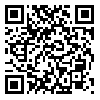BibTeX | RIS | EndNote | Medlars | ProCite | Reference Manager | RefWorks
Send citation to:
URL: http://jhr.ssu.ac.ir/article-1-1031-en.html
2- Departments of Medical Physics, School of Medicine, Iran University of Medical Sciences, Tehran, Iran
3- Departments of Medical Physics, School of Medicine, Shahid Sadoughi University of Medical Sciences, Yazd, Iran.
4- Department of Medical Physics, School of Medicine, Isfahan University of Medical Sciences, Isfahan, Iran ,
Background: Due to the crowds of people in radiation therapy centers and the importance of not interrupting the treatment process, preventive measures to deal with COVID-19 is one of the most important measures; therefore, this study aimed to evaluate the intercultural compatibility, reliability and validity of COVID-19 prevention measures in a radiation therapy center.
Methods: This analytical cross-sectional study was performed with 20 personnel at the radiation therapy center of Yazd, Iran, using a census method in September 2021. A 29 items COVID-19 prevention scale was used as measurement tool. First, cultural adaptation was performed and then face validity was determined by calculating the Impact Score. Content validity was assessed by calculating the content validity ratio (CVR) and content validity index (CVI) and reliability was determined using the Test-Retest method and Kuder–Richardson (KR20) alpha coefficient and calculating intra-class correlation coefficient (ICC). All analyses were performed in SPSS software version 24 with a significance level of 5%.
Results: 30% (6 people) were male and 70% (40 people) had less than 15 years of work experience. Four items of the questionnaire were removed based on the minimum Lawshe's CVR values, as their CVR was less than 0.62. Finally, the Kuder Richardson coefficient, Scale-level CVI, and ICC were 0.827, 0.98, and 0.52, respectively.
Conclusion: The validity and reliability of the questionnaire were confirmed; therefore, this Persian version of 25-item scale is proposed as a suitable and effective tool for COVID-19 prevention measures in Persian language countries.
| Rights and permissions | |
 |
This work is licensed under a Creative Commons Attribution 4.0 International License. |







